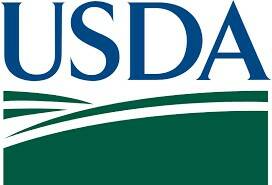Three southern peninsula communities will receive funds to improve their water systems as part of a federal investment announced earlier this month.
U.S. Department of Agriculture Rural Development State Director for Alaska Julia Hnilicka announced in a Dec. 11 press release that 21 projects to improve rural Alaskan water and wastewater infrastructure have been federally funded by a $9.2 million investment from USDA.
Included in these are infrastructure projects in Seldovia, Kachemak City and Voznesenka.
Seldovia City Manager Heidi Geagel said Monday in an email to Homer News that the City of Seldovia received three notices of “Intent to Award” from Village Safe Water, part of the Alaska Department of Environmental Conservation Division of Water.
“Village Safe Water is the grantee,” Geagel wrote. “The City of Seldovia is the local participant and will not receive the funds directly.”
The first grant of $93,750 will be used to assist in the development of a preliminary engineering report and environmental report “to evaluate alternatives for repair or replacement of the water transmission and distribution system, and the wastewater collection systems,” the USDA Rural Development Equity Chart states as of Dec. 11. The chart, available at www.rd.usda.gov/media/file/download/usda-rd-equity-chart, lists awards and award recipients both within Alaska and in the Lower 48. It also describes the projects that are being funded by USDA’s investment.
Development of these reports will be the first step in this series of projects, according to Geagel. The preliminary engineering report will evaluate alternatives for the above projects, while environmental reviews will be completed for the preferred alternatives, she wrote.
Per the notice of intent to award, Seldovia is also set to receive $3,932,000 from USDA and VSW for the Slough Sewer Improvements project, Geagel wrote. According to the press release, this project will include replacing the cast iron and ductile iron slough water mains with high-density polyethylene, or HDPE, piping, reconstructing 23 services with jointless HDPE piping, and removing and capping five cleanouts in the slough.
“Inflow and infiltration (I&I) entering the Seldovia Slough Sewer System negatively impacts the ability of the City’s wastewater collection and treatment system to operate efficiently and effectively. The I&I results in high flows that exceed the capacity of the community septic system, causing inadequately treated wastewater to be discharged into Seldovia Bay,” Geagel wrote. “This project is essential for bringing service connections to code, improving the quality of effluent discharged from the system, reducing overall operation and maintenance costs. This is a critical project in updating the community’s sewer treatment facility.”
Thirdly, Seldovia will receive $1,573,500 for the Wastewater Treatment Facility Improvements project to complete design and production for an aerated lagoon, sewer force main, and marine outfall. The grant covers about 10% of the overall project cost, according to Geagel.
“This project will be included in the multi-year priority list and prioritized for additional funding in future fiscal years as necessary to complete to project,” she wrote.
Currently, according to Geagel, the city operates a community septic tank with a marine outfall into Seldovia Bay. This infrastructure has surpassed its recommended life cycle and only provides for primary treatment. The City of Seldovia was presented with an engineering report that provided for five community wastewater treatment alternatives, and the city council “determined a preference for an aerated lagoon as a viable option that provides secondary treatment, long-term sustainability for the disposal of wastewater without pumping, and environmental benefits.”
Components of Seldovia’s water transmission system direly need to be updated. Geagel wrote to Homer News that the lower 1,050 feet of the transmission line is thin-walled steel pipe from 1963, and pipe of a similar age elsewhere in the water distribution system failed catastrophically most recently in 2017, leading to a leak of 100,000 gallons per day.
Seldovia’s water distribution system also faces similar problems. Geagel wrote that according to a 2003 water and sewer feasibility study, Seldovia has a “very old and worn” water distribution system with pipes throughout the system “operating beyond their useful life.” Based on their material composition, age and the “highly corrosive nature” of Seldovia’s groundwater, these pipes may be corroded and contributing to excessive water leaks. While “many significant upgrades” have been made to the system, old pipes from the 1960s and early 1970s still remain.
“The replacement of the raw water transmission line is an urgent and high priority for the City of Seldovia,” Geagel wrote. “As such, the City continues to seeks additional funding for the project.”
A portion of the project’s funding was included in the appropriations bill through Sen. Lisa Murkowski, she added. The City of Seldovia has also included this project as a priority for their FY2025 State and Federal Legislative Requests.
The City of Kachemak has also received $66,000 to assist in the development of preliminary engineering and environmental reports to evaluate alternatives for a community-wide water system.
Kachemak City applied for the grant last year, mayor Connie Isenhour wrote in an email response to Homer News. Now that the grant has been awarded to the community, the funding is being allocated and Isenhour is in the process of reviewing the paperwork and “working with VSW on the proper timeline.”
Voznesenka also received $66,000 to develop preliminary engineering and environmental reports to evaluate alternatives for addressing water treatment plant deficiencies.
According to the release, these investments in rural Alaska infrastructure are “part of President Biden’s commitment to advance equity for all,” as outlined in an executive order “on advancing racial equity and support for underserved communities through the federal government” issued Jan. 20, 2021.
“Water and wastewater infrastructure across Alaska is critical to the wellness of our children, Elders, and rural residents,” Hnilicka stated in the press release. “As we experience rural Alaskan water systems aging and degrading, President Biden is committed to supporting rural Alaska through federal funding for upgrades and expansions. USDA Rural Development in Alaska is proud to announce these projects to support rural Alaskan communities.”
For more information on USDA Rural Development in Alaska, visit www.rd.usda.gov/ak.



